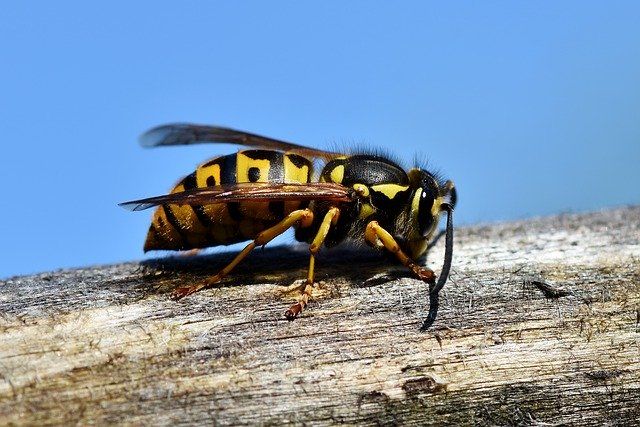As more and more of us enjoy the great outdoors, it is important that we know how to prevent, recognise and treat common insect bites or stings and this week Dr Roarty of Scally McDaid Roarty Medical Practice discusses bites and stings in his Medical Matters column.
Most stings from bees or wasps cause a mild local skin reaction, a small amount of pain and a little swelling but thankfully usually have little other effects.
So how do we treat it? Simple things work well. For example a cold compress such as a cold wet facecloth or icepack covered with a tea towel will help with the pain. Paracetamol and Ibuprofen can also help and if it is itchy sometimes over the counter ointments such as crotamiton ointment will help. Steroid cream eg hydrocortisone may help and antihistamine tablets are sometimes used if there is a lot of bites.
Bee stings are a little different in that there may be a stinger still in place, in the skin. If you see this you should dry to scrape it out with a credit card type sharp edge and do not try to pluck it. Wasps do not leave a stinger in the skin.
Some people may develop a local allergic reaction. The skin swells and becomes red and it may spread. It usually fades over a few days. It is only dangerous if your airways are affected. Treatment is oral antihistamines as soon as possible as well as cold compress and pain relief. Of course if the swelling is severe you should see a doctor.
Rarely however someone may actually develop a generalised allergic reaction to a sting and this can be very serious. This severe reaction is called anaphylaxis and quick treatment is of the utmost importance as this can be fatal. Symptoms of this severe reaction include itchy skin over many parts of the body followed by a blotchy rash. Your face, lips, tongue and throat and upper airway may swell. Nausea and cramps may develop and generalised redness of the face may also occur. Wheeze and difficulty breathing as well a racing heart and low blood pressure are also symptoms.
It generally occurs within about 10 minutes of the sting and treatment is with an adrenaline pen if you have one and dial 999 for an ambulance, and you will be treated by paramedics en route to the hospital.
If you are bitten by a lot of wasps or bees you may become very unwell, not due to an allergy but due to the increase volume of venom that your body receives.
If your sting becomes infected looking ie. becomes very red, tender or oozes pus, you may need a course of antibiotics. If you have a skin reaction that does not seem to settle, you need medical attention also.
What about insect bites?
These are treated in the same way as insect stings – cold compress, paracetamol and nurofen plus steroid cream if needed. The usual culprits in this part of the world are midges but you can also get a bite from gnats, fleas, mites, ticks and bedbugs. They can all cause swelling or a little bump on the skin called a papule, which can develop up to 24 hrs after the bite, but usually fades after a few days.
Can we prevent insect bites and stings?
As they usually happen when out and about it is advisable to do certain things to try to avoid stings. For example we should wear light coloured clothes and avoid strong fragrances. We should cover as much of our body as possible and avoid picking fruit from the ground. Avoid sticky or sweet foods outdoors and wash hands frequently. Keep uneaten foods covered.
We can help avoid insect bites by wearing long sleeved clothing and avoid fragrances or sprays. Insect repellent is also quite useful and consideration could be given to wearing complete head covering if midges are a problem.
What about Tick bites?
Ticks bite and cling on to the skin. It is important to try to remove the tick as soon as possible after the bite using fine tweezers or fingernails, trying to hold it as close as possible to the skin and avoiding squeezing the body. Clean with disinfectant and avoid the temptation to use traditional methods such as vaseline, burned matches or nail polish which are not recommended.
A certain type of tick carries a germ which causes Lyme disease which will be discussed in another article. If you become unwell after a tick bite – from a few days up to a few months or even a year – and particularly if you develop a very circular rash which spreads outwards, a little like a bullseye, you should see a doctor. The rash will usually occur from a few days to a month after the tick bite.
The above information is intended as advice only and should you have any concerns please contact your own Doctor.
Dr Ciarán Roarty MB, BCh BAO MICGP DRCOG Grad. Cert. Obst. Ultrasound is a full-time GP at Scally McDaid Roarty Medical Practice , Scally Place, Letterkenny, Tel 0749164111
scallys.ie
Tags:








